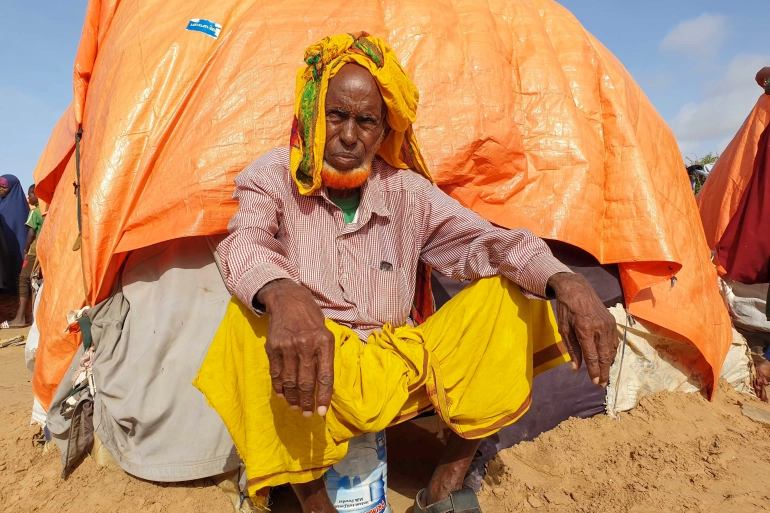
Faduma Hassan Mohamed has never witnessed a time like this.
When rains failed to fall as in previous years, she thought the river near her village of Buulo Warbo in Somalia’s southern Kuntunwarey district would not run dry.
First, the skies above became cloudless, she said, then the air hot and dry. Then the fertile soil below her feet that used to provide for her family turned into dark brown dust. Then the river dried up.
“We were farmers. We tended the land. We had a river and we used to water our crops with its water. We grew crops like maize and beans. Now, we [have] lost all of that,” the mother-of-six told Al Jazeera.
“There was no sign of rain in the sky and no water in the river. I can’t even remember the last time we harvested anything from the farm,” Faduma, who does not know her age, added.
Buulo Warbo, more than 140 kilometres (87 miles) southeast of the capital, Mogadishu, is in the Lower Shabelle region, one of the country’s breadbasket areas. The region used to produce food for Mogadishu. But after four failed rainy seasons, its people are on the move, trekking by foot towards the seaside capital.
Some have died on the way. Others, like Faduma, survived and sought refuge in a new IDP camp in the Dayniile area on the outskirts of Mogadishu. Two of her children are with her but the rest are with their grandmother.
The Horn of Africa country is experiencing its worst drought in four decades, according to the government and United Nations, with nearly a quarter of a million people facing starvation.
Most Somalis are pastoralists, relying on their livestock for food. But according to the UN, about three million livestock animals have perished due to the continuing drought and more than 805,000 people have been displaced. Nearly 7.1 million Somalis, almost half of the country’s population, face acute levels of food insecurity.
- A Tell report











